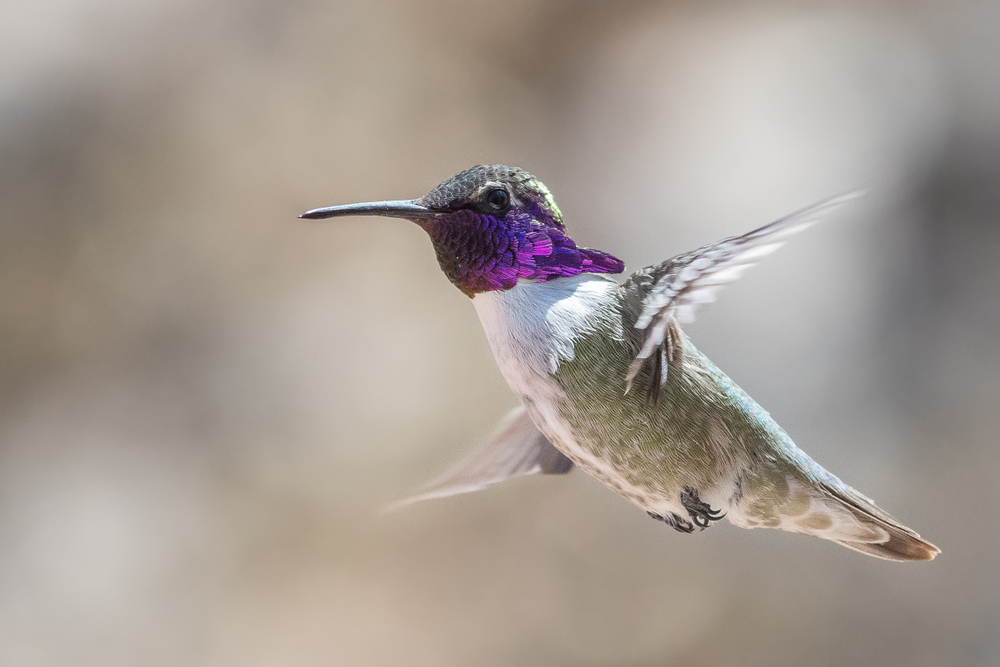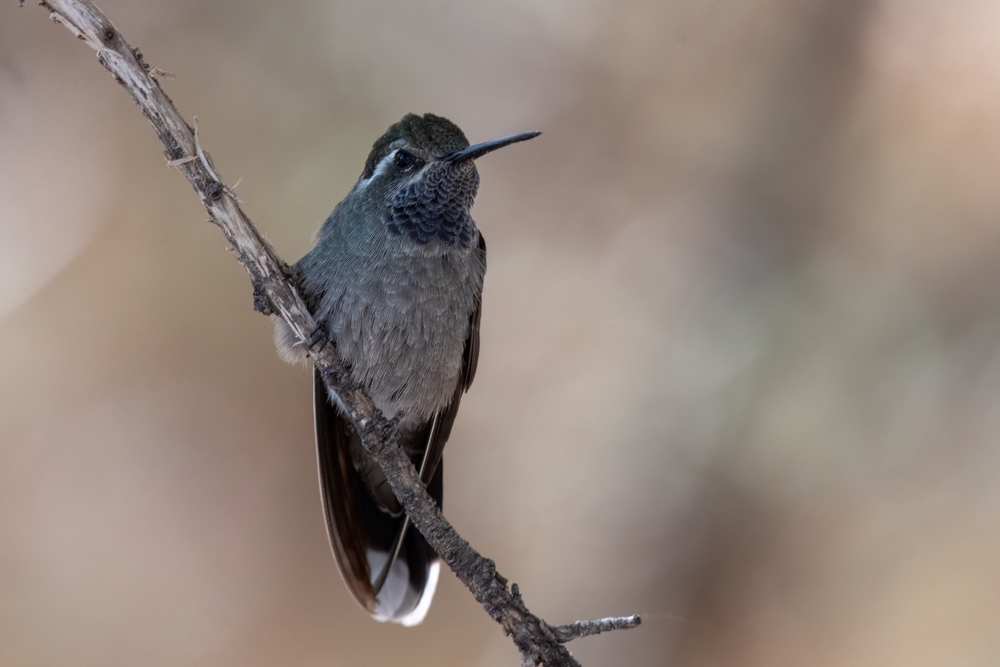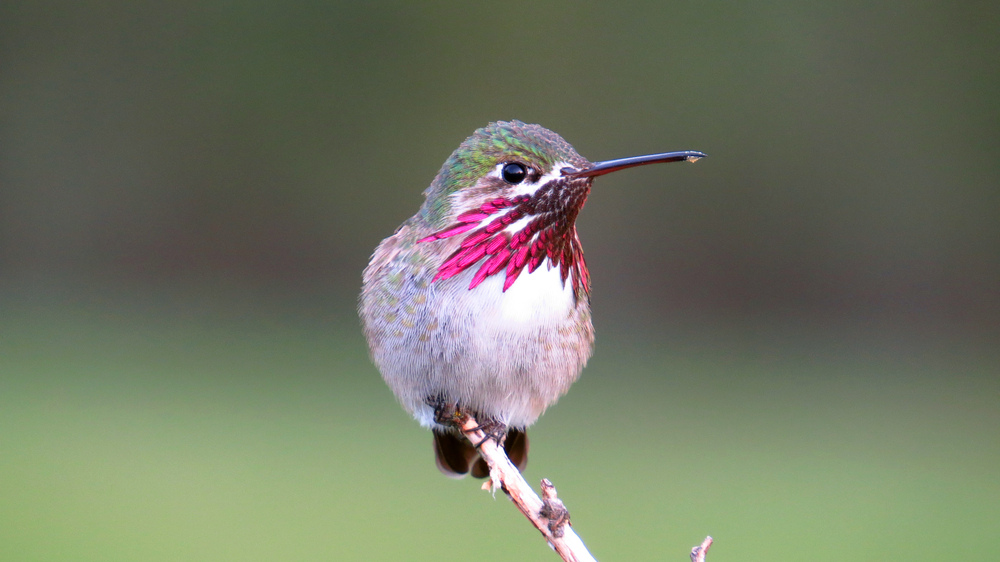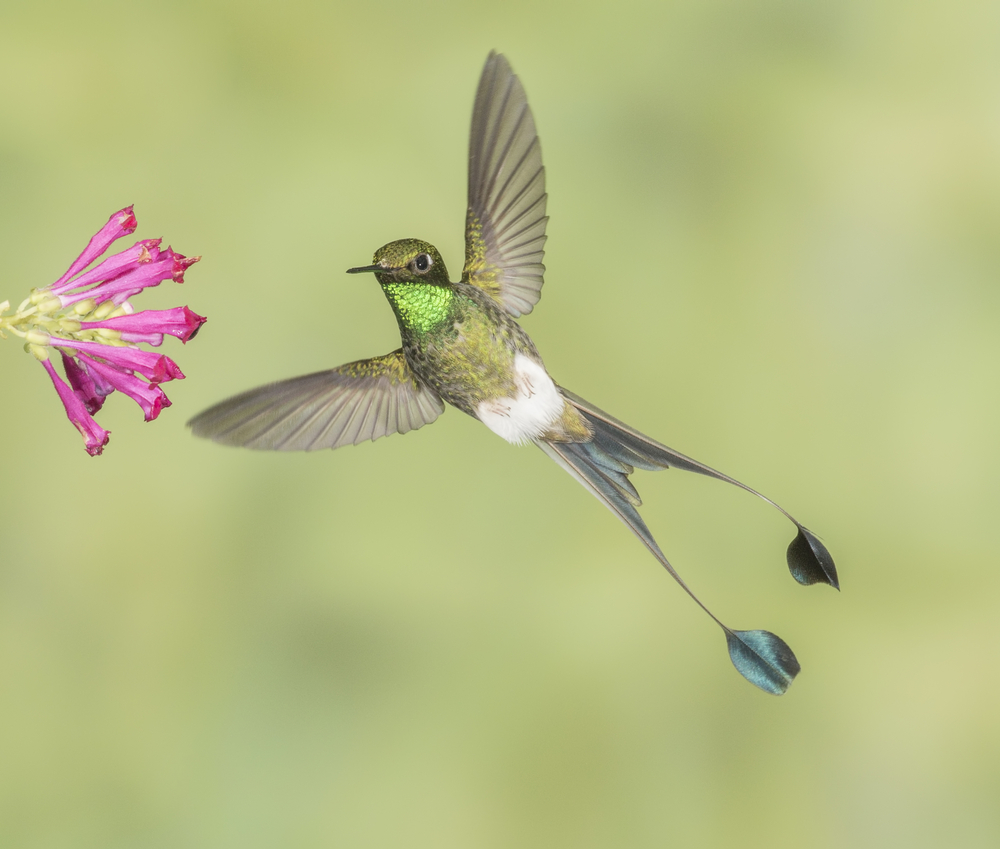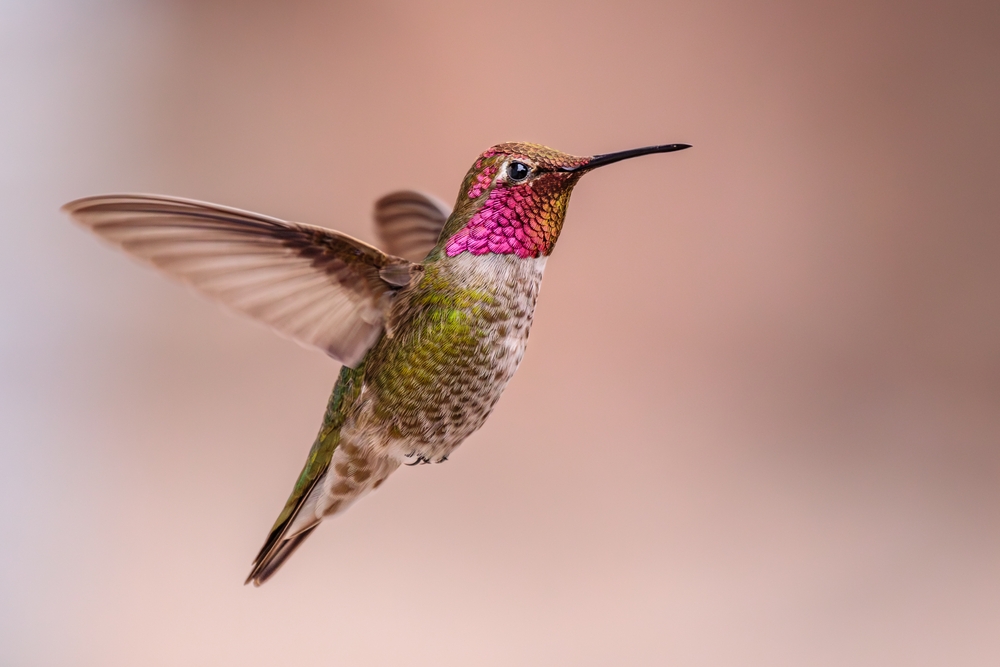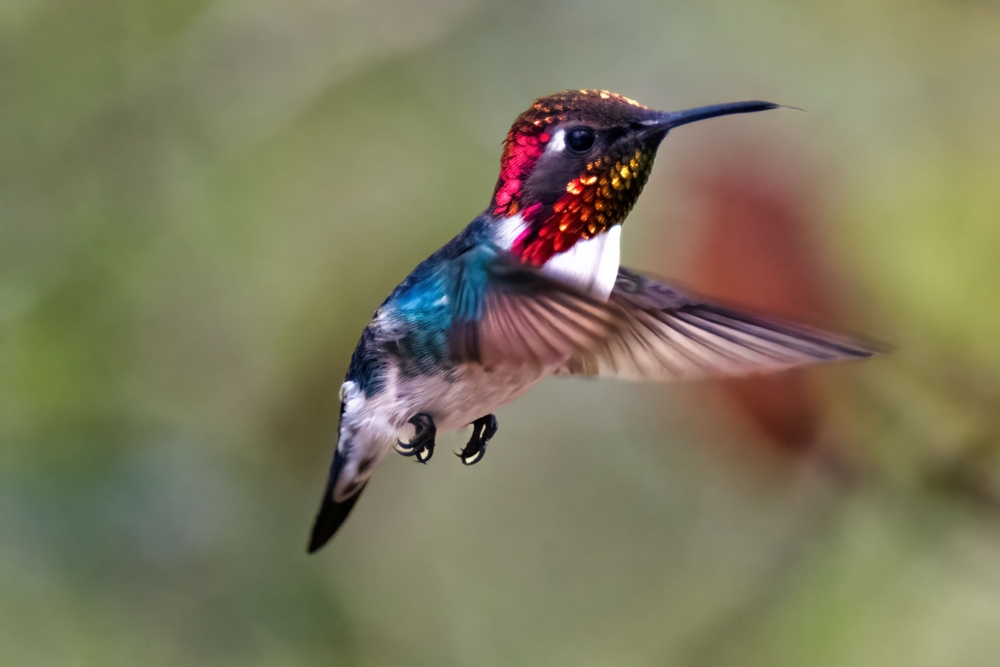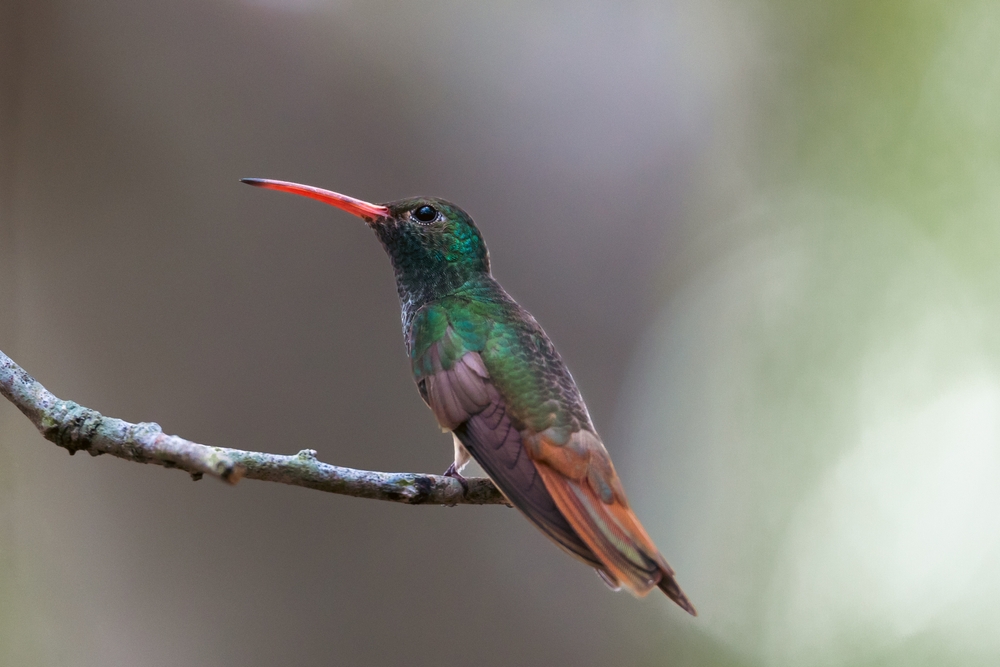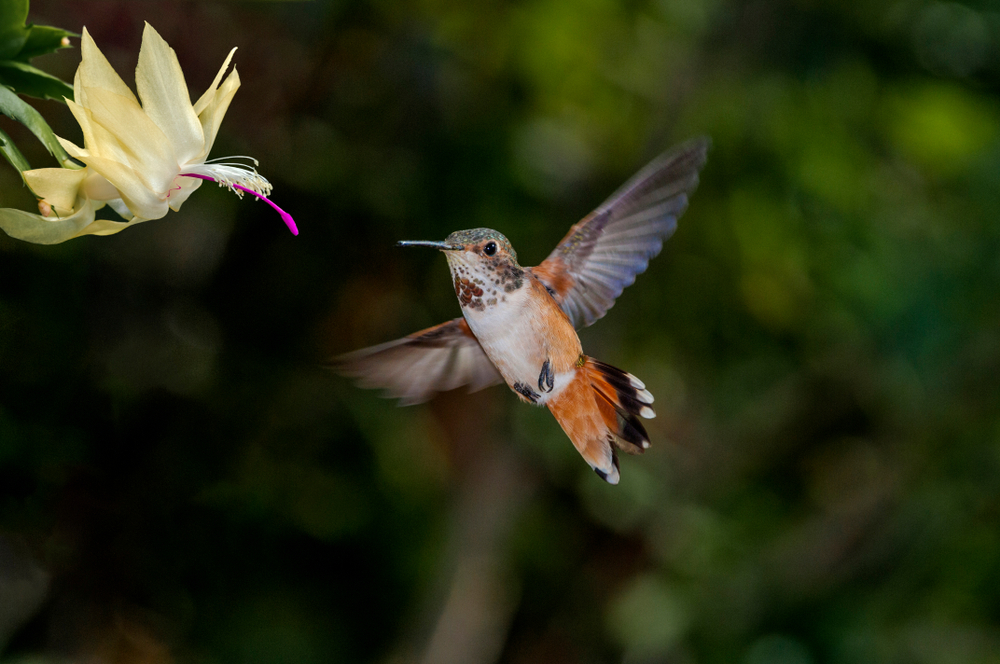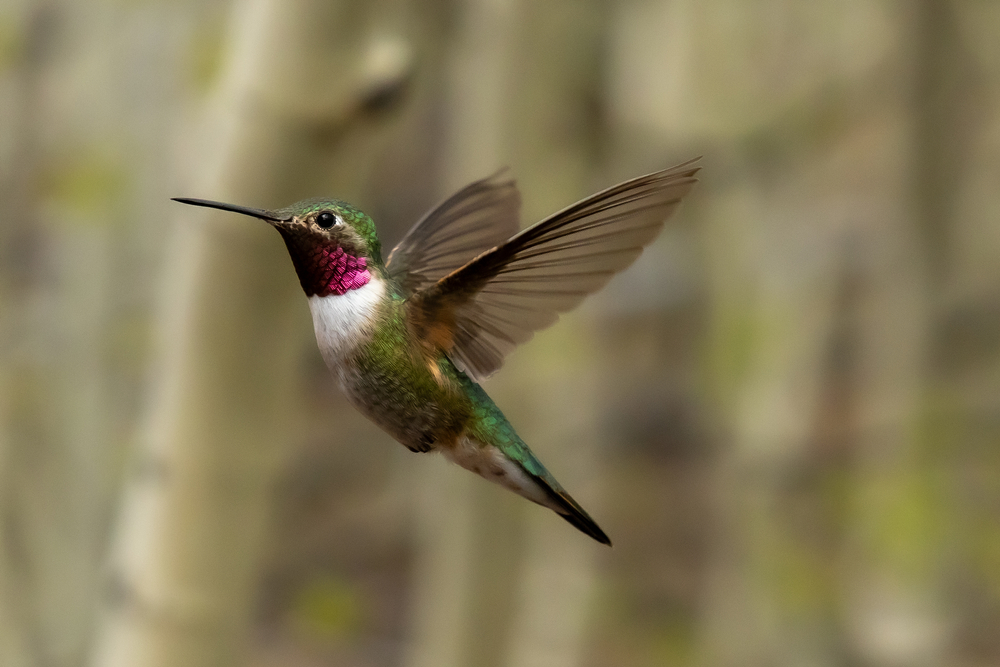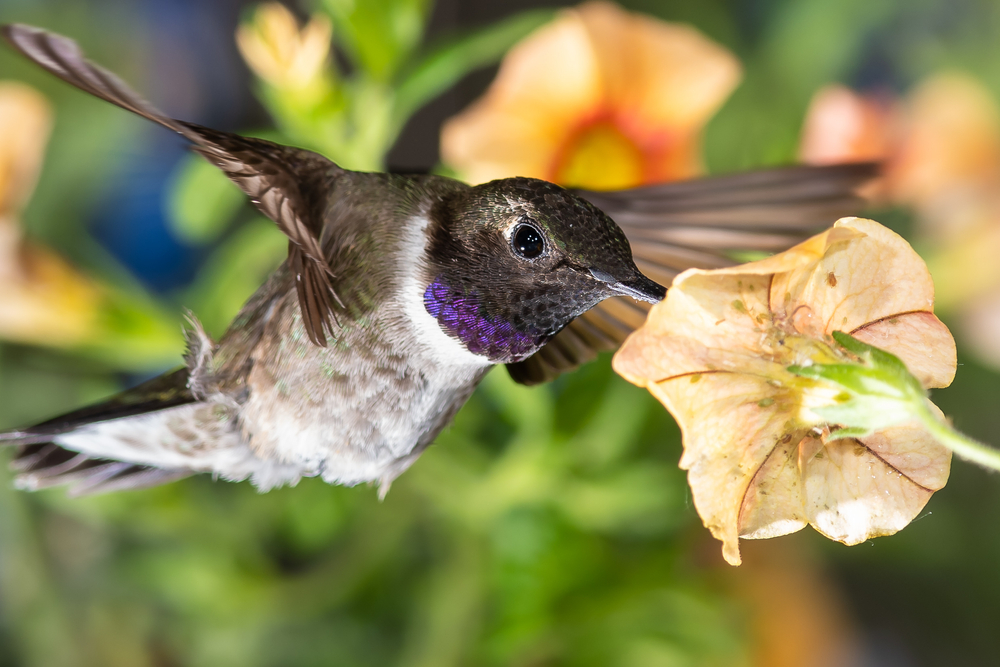The Costa’s Hummingbird (Calypte costae) is most closely related to the Anna’s Hummingbird (Calypte anna), its larger Pacific Coast cousin. Both share the same genus and have overlapping ranges, but Costa’s shows the unique flared purple gorget and crown.
About
The Costa’s Hummingbird (Calypte costae) is a dazzling desert-dwelling member of the family Trochilidae, found mainly in the arid regions of the southwestern United States and northwestern Mexico. Adapted to thrive in deserts, scrublands, and dry washes, it is a hardy and resilient species, often seen among flowering cacti, ocotillo, and desert shrubs. Despite its small size, the Costa’s Hummingbird is renowned for its radiant plumage and dramatic courtship displays.
Measuring just 7.5–9 cm (3–3.5 in) in length and weighing 2–3 grams, this tiny bird is one of the smallest hummingbirds in North America. Males are unmistakable, with an iridescent violet crown and long, flared gorget that extends down the sides of the throat like a purple mustache. Females, by contrast, are more subdued, with grayish-green upperparts and whitish underparts, though they may show a touch of violet on the throat.
The Costa’s Hummingbird feeds on nectar from desert flowers, often visiting blooms of agave, chuparosa, and ocotillo. It supplements its diet with small insects and spiders, which provide essential protein. Males establish and defend territories rich in nectar sources, performing impressive dive displays during courtship, accompanied by sharp, high-pitched sounds produced by their wings.
Breeding usually occurs from February through June, timed with desert wildflower blooms. The female alone constructs a tiny, cup-shaped nest of plant fibers, spider silk, and lichens, typically placed in a shrub or low tree. She lays two white eggs and raises the chicks without male assistance.
Though not considered threatened, the Costa’s Hummingbird is vulnerable to habitat loss and climate change, which can alter the availability of desert blooms. Still, its vibrant beauty and ability to thrive in some of North America’s harshest environments make it a desert jewel admired by birdwatchers.
Physical Characteristics
Plumage:
The Costa’s Hummingbird (Calypte costae) is a small, brilliantly colored desert hummingbird of the American Southwest and Baja California.
-
Male: Famous for its dazzling iridescent purple crown and long flared gorget that extends down the sides of the throat like a sparkling purple mustache. The back is metallic green, underparts whitish with green flanks, and the tail is dark with a slight fork.
-
Female: Much plainer, with a grayish-white throat, green back, whitish underparts, and pale-tipped tail feathers. Females lack the purple crown and gorget.
Head:
Males are among the most striking of North American hummingbirds, with the brilliant purple gorget flaring sidewaysin display, making them appear larger than their tiny size suggests. The bill is straight, slender, and black, well-suited for tubular desert flowers.
Body:
Small and compact, with shimmering green upperparts and pale grayish underparts. The contrast between the male’s glowing purple feathers and the desert backdrop makes them highly visible during display flights.
Size:
-
Length: 3–3.5 in (7.6–9 cm)
-
Wingspan: 4.3–4.5 in (11–11.5 cm)
-
Weight: 0.1–0.12 oz (2.5–3.5 g)
Feet & Tail:
Feet are tiny, used mainly for perching rather than walking. The tail is slightly forked, with dark central feathers and pale tips in females.
Flight Style:
Wingbeats average about 50 per second, producing the characteristic hum. Males perform spectacular U-shaped display dives, often ending with a shrill sound made by their tail feathers.
The Costa’s Hummingbird’s brilliant purple crown and flared gorget, compact size, and desert adaptations make it one of the most visually striking hummingbirds of the southwestern deserts.
Reproduction
Breeding Season:
Costa’s Hummingbirds breed early in the year, often from February to June, coinciding with desert wildflower blooms in the American Southwest and Baja California.
Courtship:
-
Males perform dramatic U-shaped dive displays, descending rapidly past the female while producing a high-pitched sound with their tail feathers.
-
They also hover in front of females, flaring their brilliant purple gorget feathers outward to form a wide “mustache-like” display.
-
As in most hummingbirds, males do not participate in nesting or chick care after mating.
Nesting:
-
The female alone builds the nest, usually on a low shrub, cactus, or small tree, often in arid scrub or desert washes.
-
The nest is tiny and cup-shaped, made of plant down, feathers, and spider silk, camouflaged with bits of lichen and bark.
-
The elastic spider silk construction allows the nest to expand as chicks grow.
Eggs:
-
A clutch typically contains 2 small white eggs, each about the size of a pea (0.5 in / 1.3 cm long).
Incubation:
-
Lasts 15 to 18 days.
-
Only the female incubates.
Chick Development:
-
Chicks hatch altricial (blind and featherless).
-
The female feeds them regurgitated nectar and small insects for protein.
-
Nestlings fledge at about 20 to 23 days, though they may remain dependent for a short period after leaving the nest.
Maturity:
-
Juveniles become independent within weeks after fledging.
-
Sexual maturity is typically reached by 1 year of age, allowing them to breed the following season.
Costa’s Hummingbirds’ reproductive cycle is remarkable for its early timing in desert ecosystems, ensuring that young are raised during the peak of wildflower abundance.
Lifespan
In the Wild:
Costa’s Hummingbirds typically live 5 to 6 years in their desert and scrubland habitats. As with most hummingbirds, the highest mortality occurs during the first year due to predation and the challenges of migration or food scarcity.
In Captivity:
Rarely kept, but in rehabilitation or protected conditions, they may live a little longer, sometimes reaching 7 to 8 yearswith steady food and no predators.
Record Lifespan:
The oldest known wild Costa’s Hummingbird, confirmed through banding studies, lived at least 8 years and 9 months, which is exceptional for such a tiny bird.
Threats to Longevity:
-
Predation: Vulnerable to hawks, kestrels, snakes, larger birds, and domestic cats.
-
Habitat Loss: Urban development and loss of desert scrub reduce food and nesting sites.
-
Climate Change: Alters the timing of desert wildflower blooms, potentially reducing nectar availability during breeding.
-
Collisions: Window strikes and entanglement in spider webs or human debris are common hazards.
Despite these risks, Costa’s Hummingbirds are resilient and adaptable, thriving in desert habitats, gardens, and suburban areas, which has helped their populations remain stable.
Eating Habits
Diet:
Costa’s Hummingbirds rely on a high-energy diet of:
-
Nectar: Their primary food, drawn from desert flowers such as ocotillo, chuparosa, penstemon, and agave.
-
Insects & Spiders: Small flies, gnats, aphids, and spiders provide protein essential for adults and growing chicks.
-
Sap: Occasionally visit sapsucker wells to drink tree sap and capture trapped insects.
Foraging Behavior:
-
Hover in front of flowers, extending their long tongue to lap nectar at high speed (10–13 licks per second).
-
Frequently perch on shrubs or wires between feeding bouts, often in open desert washes.
-
Employ hawking, darting into the air to catch small insects mid-flight, or gleaning them from plants and spider webs.
-
Males aggressively defend territories, chasing away rival hummingbirds and even larger birds from flower patches and feeders.
Feeding Adaptations:
-
Straight, slender bill adapted for tubular desert blossoms.
-
Ability to enter torpor at night, lowering body temperature and metabolism to survive cool desert nights when food is unavailable.
-
Excellent spatial memory allows them to keep track of individual flower nectar replenishment.
Role in Ecosystem:
As a pollinator of desert wildflowers, Costa’s Hummingbirds play a key role in sustaining arid ecosystems. Their insect hunting also helps regulate small insect populations.
The Costa’s Hummingbird’s nectar specialization, territorial defense, and desert survival strategies make it one of the most important pollinators of southwestern deserts.
Uniqueness
Brilliant Purple Gorget and Crown:
Male Costa’s Hummingbirds are unmistakable for their vivid purple crown and flared gorget, which extend outward like a glowing mustache, creating one of the most dramatic displays of any North American hummingbird.
Desert Specialist:
Unlike many hummingbirds tied to forests or mountains, Costa’s thrive in arid deserts, washes, and scrublands, adapted to nectar sources in hot, dry climates.
Early Breeding Season:
They begin nesting as early as February, taking advantage of early-blooming desert flowers such as chuparosa and ocotillo—one of the earliest breeders among U.S. hummingbirds.
Courtship Displays:
Males perform steep U-shaped dive displays, producing high-pitched whistles with their wing feathers, and hover directly in front of females while flaring their purple gorgets dramatically.
Torpor Survival:
To withstand cold desert nights, they enter torpor, slowing heart rate and metabolism drastically to conserve energy.
Range Adaptability:
Though centered in the Southwest and Baja California, they readily adapt to gardens, suburbs, and feeders, expanding their range beyond natural desert habitats.
Costa’s Hummingbird’s spectacular purple plumage, desert lifestyle, and early nesting cycle make it one of the most unique and specialized hummingbirds in North America.
Be the First to Share Photos of This Species.
FAQ’s
1. What is the closest species to the Costa’s Hummingbird?
2. How does the Costa’s Hummingbird compare to other hummingbirds?
Costa’s Hummingbird is smaller than many U.S. hummingbirds (only about 3 in long) and is especially adapted to deserts. Unlike the emerald gorgets of other species, males display a brilliant purple crown and mustache-like gorget, making them stand out.
3. What national parks provide the best opportunities to see a Costa’s Hummingbird?
They are best seen in desert parks of the Southwest, including Joshua Tree National Park (California), Saguaro National Park (Arizona), and Anza-Borrego Desert State Park (California), where desert flowers attract them in spring.



































































